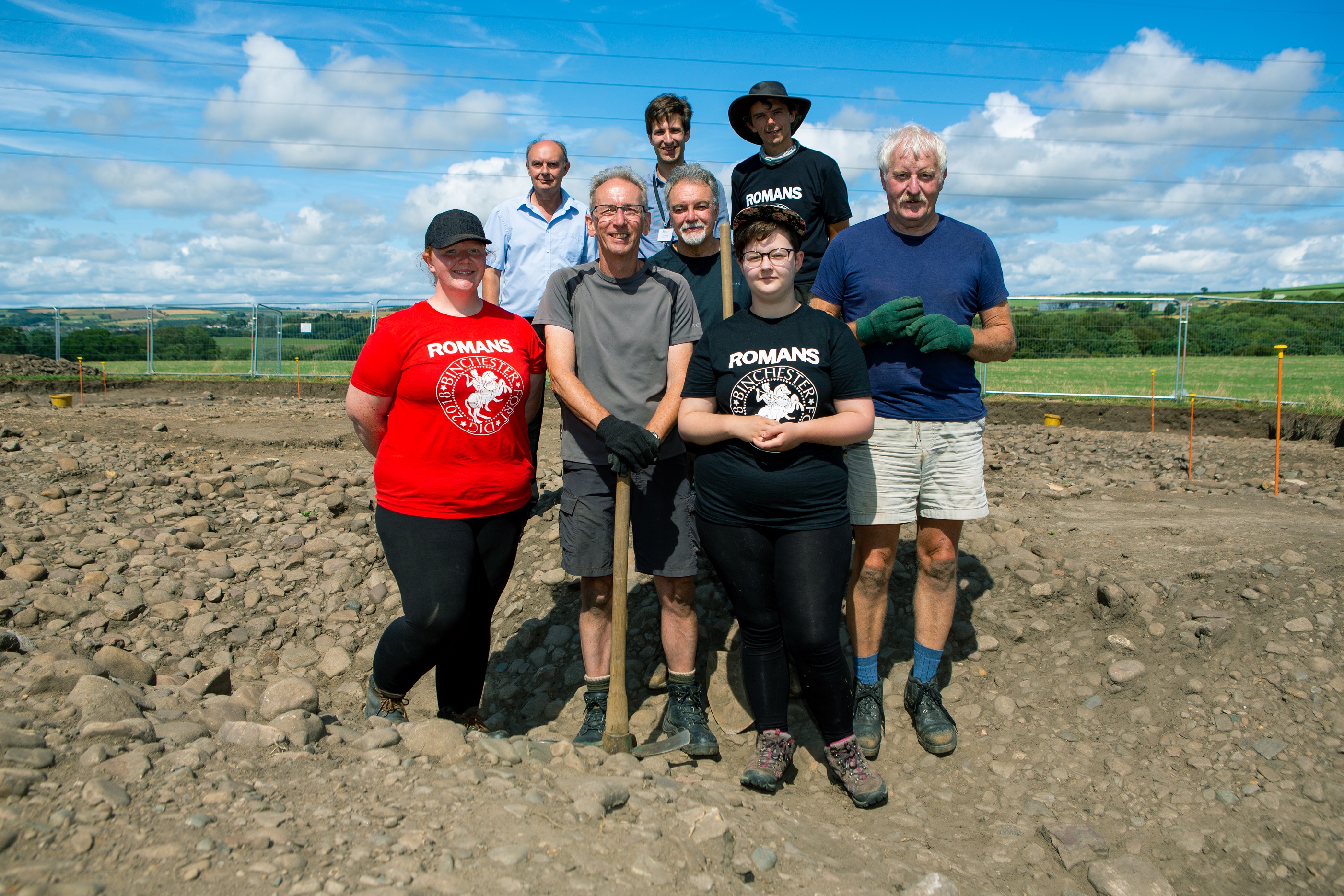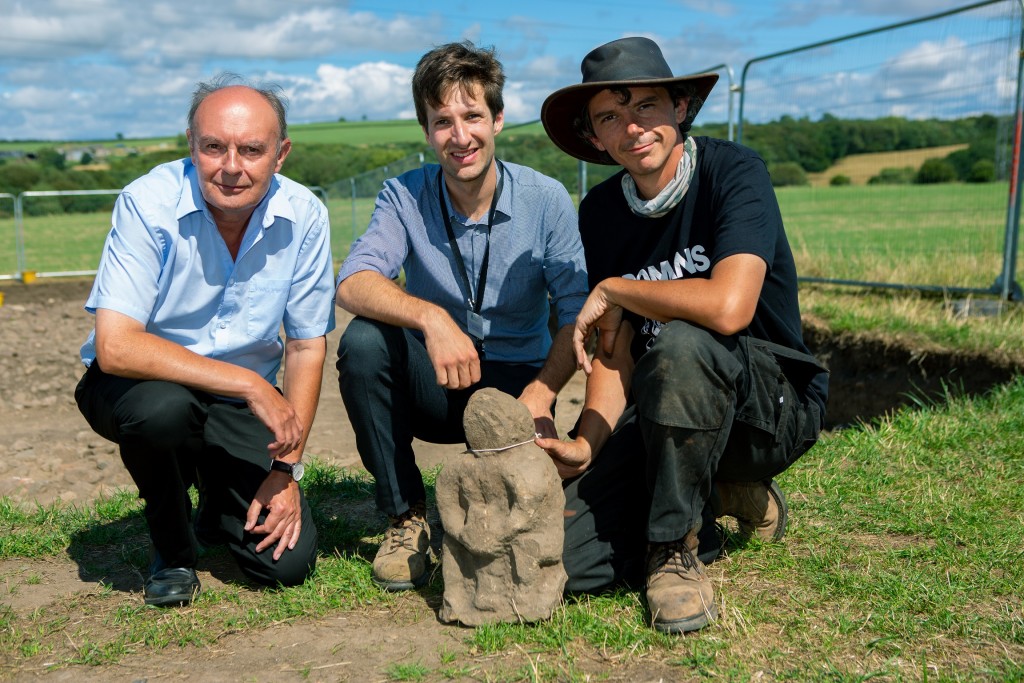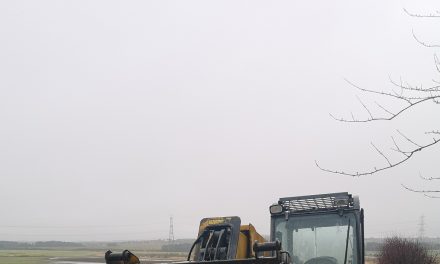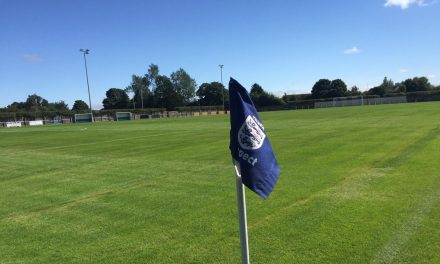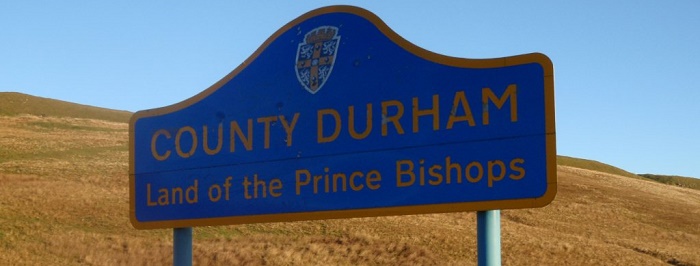County Durham’s largest Roman fort has attracted archaeologists and volunteers from across the globe for the first in a new series of excavations, digging deeper into its unexplored past.
Dating back to the first century, the seven-hectare site at Binchester Roman Fort, near Bishop Auckland, is believed to have once housed several cohorts of Roman soldiers along with units of auxiliary cavalry.
During the course of a six-week dig, more than 60 volunteers from as far afield as California joined forces with UK archaeologists to focus their attentions on the northern end of the site, which has been left largely undisturbed over the centuries.
Run in partnership by The Auckland Project, Durham County Council and Northern Archaeological Associates Ltd., the excavation was a significant step towards the long-term development of archaeological research at Binchester. More excavations are planned for the Durham County Council-managed site in the future.
First investigated by Victorian archaeologists in 1878, the fort at Binchester was located on, Dere Street, the main Roman road running South to North between York, Hadrian’s Wall and Scotland.
A campaign of excavations led by Durham University and Durham County Council between 2009 and 2015 uncovered buildings inside and outside the fort, including the well-preserved remains of part of the regimental bath-building.
The 2018 excavations built upon earlier work to shine a spotlight on the early defences of Binchester and the development of the civilian settlement which sprang up along the road that exits the fort northwards.
This dig has revealed a well-preserved Roman road leading out of the north east gate of the later smaller fort with evidence of small-scale industrial buildings from the late Roman period on either side.
The team believes that a slump in areas of cobblestone surfacing, dating from the late 4th century, suggests the presence of one or more underlying ditches. Further investigation will determine whether the ditches formed part of an original timber fort and accompanying ramparts, constructed at Binchester in AD 80.
Hundreds of fragments of Roman pottery were also excavated, alongside smaller items such as pieces of jet potentially sourced from Whitby, a copper alloy statuette thought to be of Mars the Roman god of war, and a carved stone image of what could be a Romano-British deity.
Dr. David Mason, Principal Archaeologist at Durham County Council, is leading the work at Binchester. He said: “The discoveries made this summer have already made a significant contribution to our understanding of this part of the extensive Roman complex at Binchester.
“The road exiting the north east gate of the later fort has been shown to be very substantial, raising questions about what facilities it was servicing in the area beyond.
“Equally, confirmation of the line of the defences of the early fort is a very exciting discovery allowing a clearer idea of its size and layout to be determined”.
The finds will now be sent for further analysis, which is hoped will reveal more information about the Roman people who owned and used them.
John Castling, Community Archivist at The Auckland Project said: “There is huge potential for extensive buried archaeological remains at Binchester.
“We know the wider landscape around the site holds new insights, particularly regarding its early history and occupation at the end of the Roman period, and we are really looking forward to working to develop our campaign of investigations to bring these to light.”
Future excavations are now being planned, bringing together volunteers and experts from a number of organisations to continue research at the site.
Steve Collison, Project Officer at Northern Archaeological Associates said: “Working with the volunteers on this project has been a rare privilege. Their enthusiasm for the archaeology makes time spent on site a real pleasure.
“Many of the volunteers have been involved in previous seasons of excavation, and their experience and dedication has really shone through, particularly in the challenging conditions of the recent heatwave.”
Anyone interested in volunteering with The Auckland Project on future archaeological research can visit aucklandproject.org/volunteer-with-us/ or email volunteers@aucklandproject.org
More details of the archaeological excavation at Binchester can be found on the dedicated blog: aucklandproject.org/diaries-at-the-dig
Follow Northern Archaeological Associates Ltd. on Facebook, Twitter and Instagram for more information and updates on their excavations.
Binchester Roman Fort is open daily from 10am to 4.30pm until 30 September 2018. From 1 October 2018, is it open from 11am to 4.30pm. For more information visit: durham.gov.uk/binchester.
To keep up-to-date with The Auckland Project please sign up to receive a monthly newsletter via aucklandproject.org, or follow The Auckland Project on Facebook, Twitter and Instagram.

